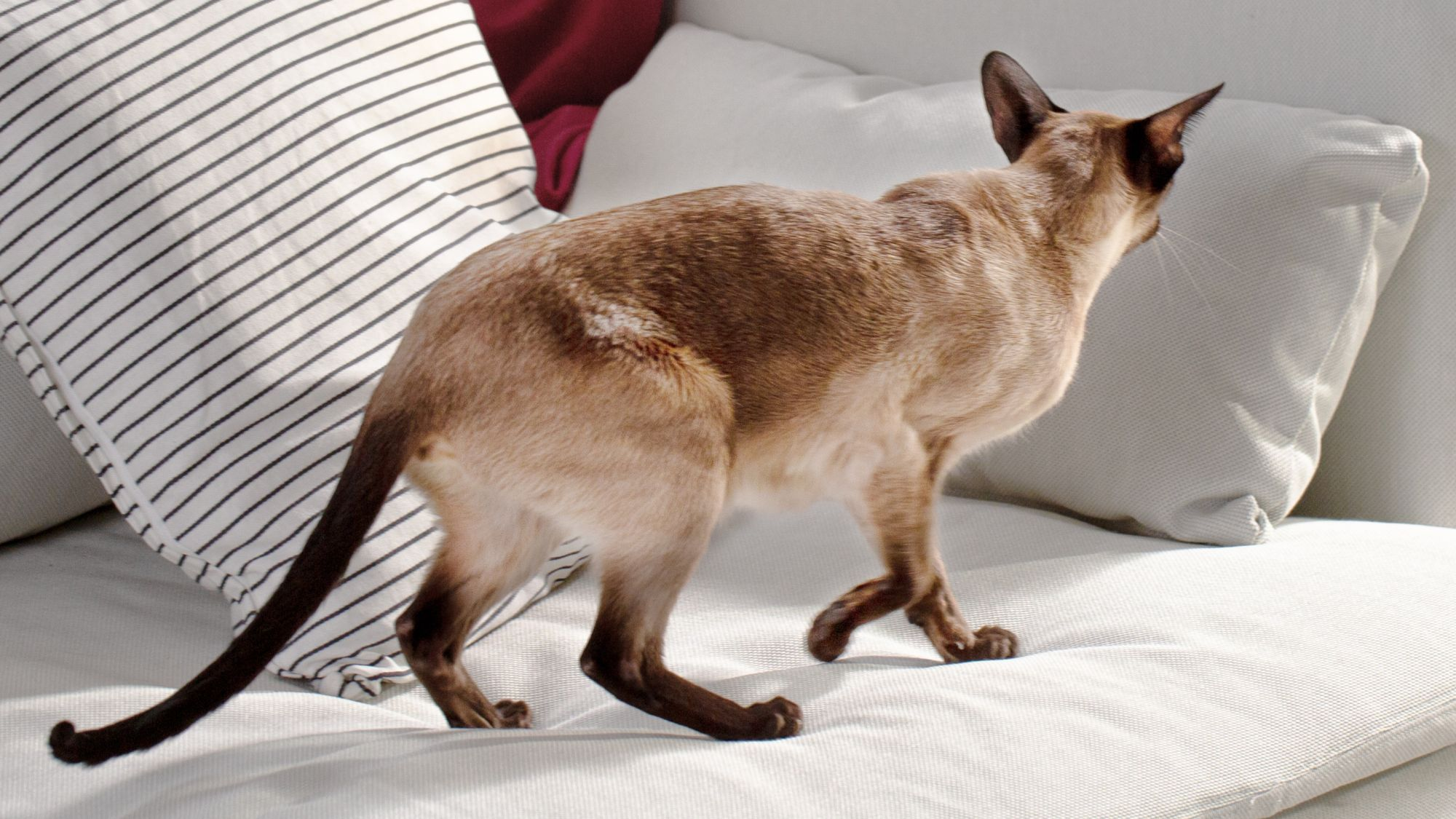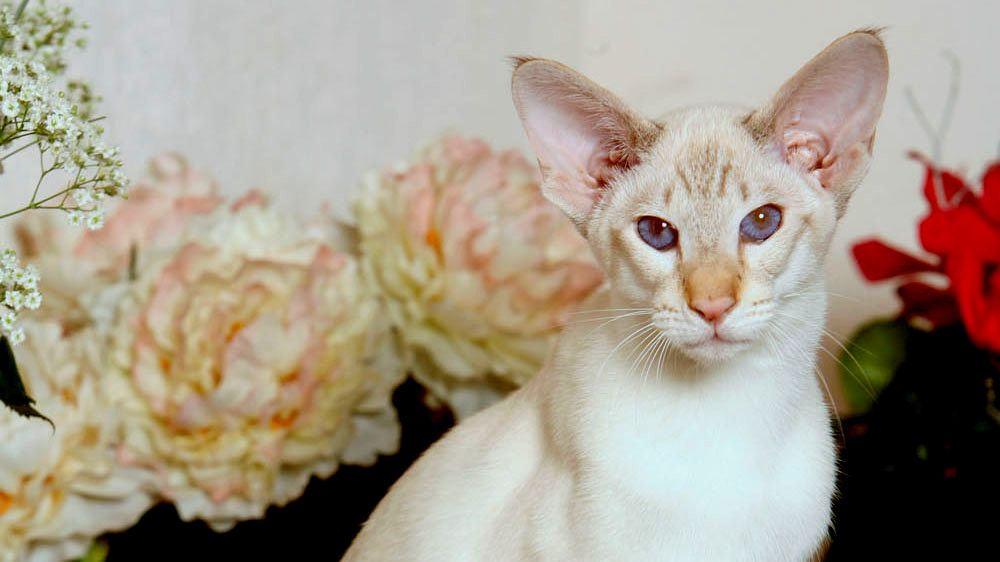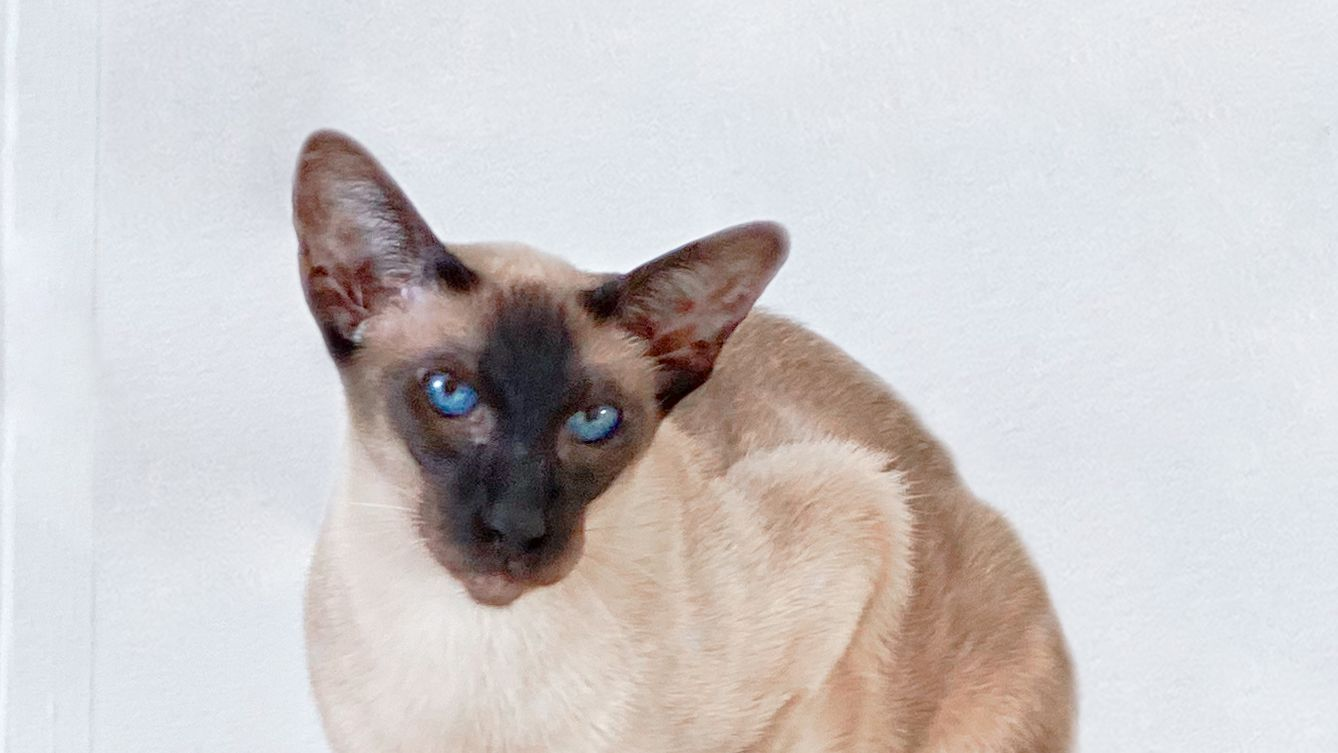Let's talk Siamese Cats
With their sleek, sassy looks and almost regal-like bearing, the Siamese is often regarded as one of the most archetypal and beautiful breeds of cat. And yet, in their temperament, the Siamese is almost more dog-like. Affectionate, sociable and playful, they form strong attachments to their owners and enjoy being with children and other pets. They also have their own favorite toys and never tire of games – even fetch!
Official name: Siamese
Other names: Royal Cat of Siam
Origins: Thailand
Hair length
2 out of 5Shedding Level
2 out of 5Grooming needs
1 out of 5Energy level
3 out of 5Vocal
5 out of 5Family pet
4 out of 5Compatibility with other pets
4 out of 5Can stay alone
1 out of 5Environment indoor or outdoor
3 out of 5
| Male | Female |
|---|---|
| Height | Height |
| 29 - 31 cm | 27 - 31 cm |
| Weight | Weight |
| 9 - 15.5 kg | 6.5 - 11 kg |
| Life Stage | |
|---|---|
| Adult | |
| 1 to 7 years | |
| Mature | Senior |
| 7 to 12 years | From 12 years |
Hair length
2 out of 5Shedding Level
2 out of 5Grooming needs
1 out of 5Energy level
3 out of 5Vocal
5 out of 5Family pet
4 out of 5Compatibility with other pets
4 out of 5Can stay alone
1 out of 5Environment indoor or outdoor
3 out of 5
| Male | Female |
|---|---|
| Height | Height |
| 29 - 31 cm | 27 - 31 cm |
| Weight | Weight |
| 9 - 15.5 kg | 6.5 - 11 kg |
| Life Stage | |
|---|---|
| Adult | |
| 1 to 7 years | |
| Mature | Senior |
| 7 to 12 years | From 12 years |
Tailored nutrition for your Siamese

Get to know the Siamese
All you need to know about the breed
As the old expression goes, “nobody owns a cat”. But, if they did, it would probably be a Siamese.
Considered one of the friendlier feline breeds, they revel in being with people and can often bond strongly with a single person. They also thrive on attention and interaction. In fact, in some ways, the Siamese cat temperament is more like that of a dog.
Once known as the Royal Cat of Siam, the Siamese breed has always been closely associated with Thailand, although their precise origins remain somewhat shrouded in mystery. What we do know is that they were brought over to the West in the late 19th century to a mixed reception – as no one had ever seen their like before – but that they soon became popular pets.
Easy to take care of, their coat is short and smooth, accentuating their long, muscular bodies. There are also several types of Siamese cat colors, including seal point, chocolate point, blue point and lilac point.
Highly intelligent, the Siamese cat has personality in spades. They’ll be interested in everything that you’re doing and often follow their owners like a shadow. They are also surprisingly ‘chatty’ animals and will try to communicate with you in their own unique way – sounding quite unlike any other cat.
A regular fixture in popular culture, the Siamese has been depicted in paintings and books for centuries. On our screens, they have also featured in several Walt Disney films including Lady and the Tramp (1955), The Incredible Journey (1963), That Darn Cat (1965) and Aristocats (1970). More recently, one of the most popular Pokémon species was based on a Siamese cat.

2 facts about Siamese cats
1. A perfect symmetry
With their elegant, angular bodies, the Siamese cat is often thought to look almost other-worldly. But did you know that if you measure from the tip of the nose to each tip of the ear, their face also forms a perfect triangle?
2. Two is company
Given their sociable nature, Siamese cats don’t do well if left alone. So, for human owners who may need to be out during the day, it’s generally recommended to consider having a second Siamese. That way, they can keep each other company.

History of the breed
Dating back many centuries, the first known reference to the Siamese breed occurs in a collection of ancient manuscripts from the historic Ayutthaya Kingdom in Siam – what is now modern-day Thailand. Entitled ‘The Treatise on Cats’, these fascinating documents are thought to have been created from the 14th century onwards.
It wasn’t until the 1800s, however, that the Siamese found its way to the West. Originally known as the Royal Cat of Siam, they received something of a mixed reaction initially, as no one had seen anything like them before. In fact, in 1871, when three were shown at London’s Crystal Palace Show, they were given a decidedly lukewarm reception.
However, it wasn’t long before the Siamese breed took off, going on to become a very fashionable pet. The first standard was established in the UK in 1892 and they were soon in demand on both sides of the pond.
Today, there are actually two types of Siamese cat. The reason for this is that, due to selective breeding, there developed two sub-breeds of Siamese: the modern ‘Show-style’, which is more elongated and slender in the body and has a different-shaped head, and the ‘Traditional’ Siamese.
From head to tail
Physical characteristics of Siamese cats
1.Head
2.Face
3.Body
4.Coat
5.Coloring

Things to look out for
From specific breed traits to a general health overview, here are some interesting facts about your Siamese cat
Siamese cats don't have the best nighttime vision.
While they may have some of the most striking eyes of any cat, with their piercing blue gaze, they lack a physiological feature that amplifies low light. Many early Siamese cats were actually cross-eyed, which helped to compensate for the problem, but the trait was seen as a fault. As a result, it was largely eliminated through selective breeding. It’s worth knowing all this as their poorer eyesight can make the Siamese more at risk to night time dangers such as traffic. On the plus side, unlike some other blue-eyed animals, their hearing is unaffected in any way.
Another common problem in the Siamese is dental issues.
These can include conditions such as gingivitis – inflammation of the gums – which can potentially lead on to periodontal disease. While some cats don’t display any symptoms, some will salivate or show difficulty chewing, among other things. If you have any concerns or notice any changes in behavior, please consult your veterinarian who will be able to help. In any case, regular dental exams are recommended for your Siamese. They should also have their teeth brushed daily – or as often as you can.
They can also be susceptible to some specific complaints
Siamese cats have a higher risk of developing a condition called ‘cholangiohepatitis syndrome’. This is an inflammation of the bile duct often caused by a bacterial infection either in situ or nearby in another organ. Anatomically, this duct shares its intestinal connection with three organs (the pancreas, liver and small intestine), so when one goes wrong, they can all get into trouble. The Siamese also has a breed predilection for a condition called ‘amyloidosis’. This is a deposition of insoluble ‘fibrillar’ protein in various organs and tissues that interferes with their normal function. The kidneys and liver are the main affected locations. So, if your Siamese seems off-color in any way, it’s best to go straight to your vet.

Caring for your Siamese
Grooming, training and exercise tips
Quite an energetic cat, the Siamese is also a fairly determined climber. As such, they will benefit from having a good-quality, sturdy cat tree to help keep them occupied. That way, you will hopefully be able to avoid them climbing up your curtains. Among the other characteristics of a Siamese cat, they also thrive on playing games. So that can be another handy way to keep them active – both physically and mentally. A range of cat toys will help keep them busy – and they even enjoy a game of fetch. Another way to ensure they get enough exercise is to adopt the aforementioned solution of having a second Siamese (that really can’t be said enough) as they will also enjoy chasing each other.
One of the other great things about the Siamese breed is that they are very low maintenance in terms of grooming. All they really need is a quick run-through with a comb once a week to remove any dead hair. The Siamese cat also sheds very little compared to some other breeds. Like most cats, they rarely need to be bathed. Also, remember to give their ears a check regularly and make sure to consult your veterinarian with any questions or concerns. Additionally, it is good to brush their teeth daily, if this routine is well tolerated by your cat.
A highly intelligent breed of cat, the Siamese learns super-fast and will quickly settle into life in your home. However, as they thrive on interaction and form strong bonds with their owners, they do require a certain amount of time investment. In short, this is a breed best-suited to someone looking for a companion animal – especially as one of the Siamese behavior traits is that they enjoy playing games. As they can also suffer from separation anxiety, it’s recommended that you get a pair if you’re likely to be out a lot. That way, they can keep each other company – and hopefully out of any mischief. But, on the whole, Siamese behavior problems are minimal.
Quite an energetic cat, the Siamese is also a fairly determined climber. As such, they will benefit from having a good-quality, sturdy cat tree to help keep them occupied. That way, you will hopefully be able to avoid them climbing up your curtains. Among the other characteristics of a Siamese cat, they also thrive on playing games. So that can be another handy way to keep them active – both physically and mentally. A range of cat toys will help keep them busy – and they even enjoy a game of fetch. Another way to ensure they get enough exercise is to adopt the aforementioned solution of having a second Siamese (that really can’t be said enough) as they will also enjoy chasing each other.
One of the other great things about the Siamese breed is that they are very low maintenance in terms of grooming. All they really need is a quick run-through with a comb once a week to remove any dead hair. The Siamese cat also sheds very little compared to some other breeds. Like most cats, they rarely need to be bathed. Also, remember to give their ears a check regularly and make sure to consult your veterinarian with any questions or concerns. Additionally, it is good to brush their teeth daily, if this routine is well tolerated by your cat.
A highly intelligent breed of cat, the Siamese learns super-fast and will quickly settle into life in your home. However, as they thrive on interaction and form strong bonds with their owners, they do require a certain amount of time investment. In short, this is a breed best-suited to someone looking for a companion animal – especially as one of the Siamese behavior traits is that they enjoy playing games. As they can also suffer from separation anxiety, it’s recommended that you get a pair if you’re likely to be out a lot. That way, they can keep each other company – and hopefully out of any mischief. But, on the whole, Siamese behavior problems are minimal.
All about Siamese cats
Yes, absolutely – that is one of the main Siamese behavior traits. In fact, they make excellent companions all-round. However, due to their activity level and intelligence, the Siamese can occasionally get into mischief if left alone. So, they will do best with an owner who wants to spend time with their cat.
One of the longer-lived breeds, Siamese cats live up to around 12 to 15 years on average. However, some can reach 20 years old – and even beyond. So, in short, the life expectancy of a Siamese cat is fairly high.
Read more on this topic
Sources
- Veterinary Centers of America https://vcahospitals.com/;
- Royal Canin Cat Encyclopaedia. Ed 2010 and 2020
- Banfield Pet Hospital https://www.banfield.com/
- Royal Canin BHN Product Book
Like & share this page